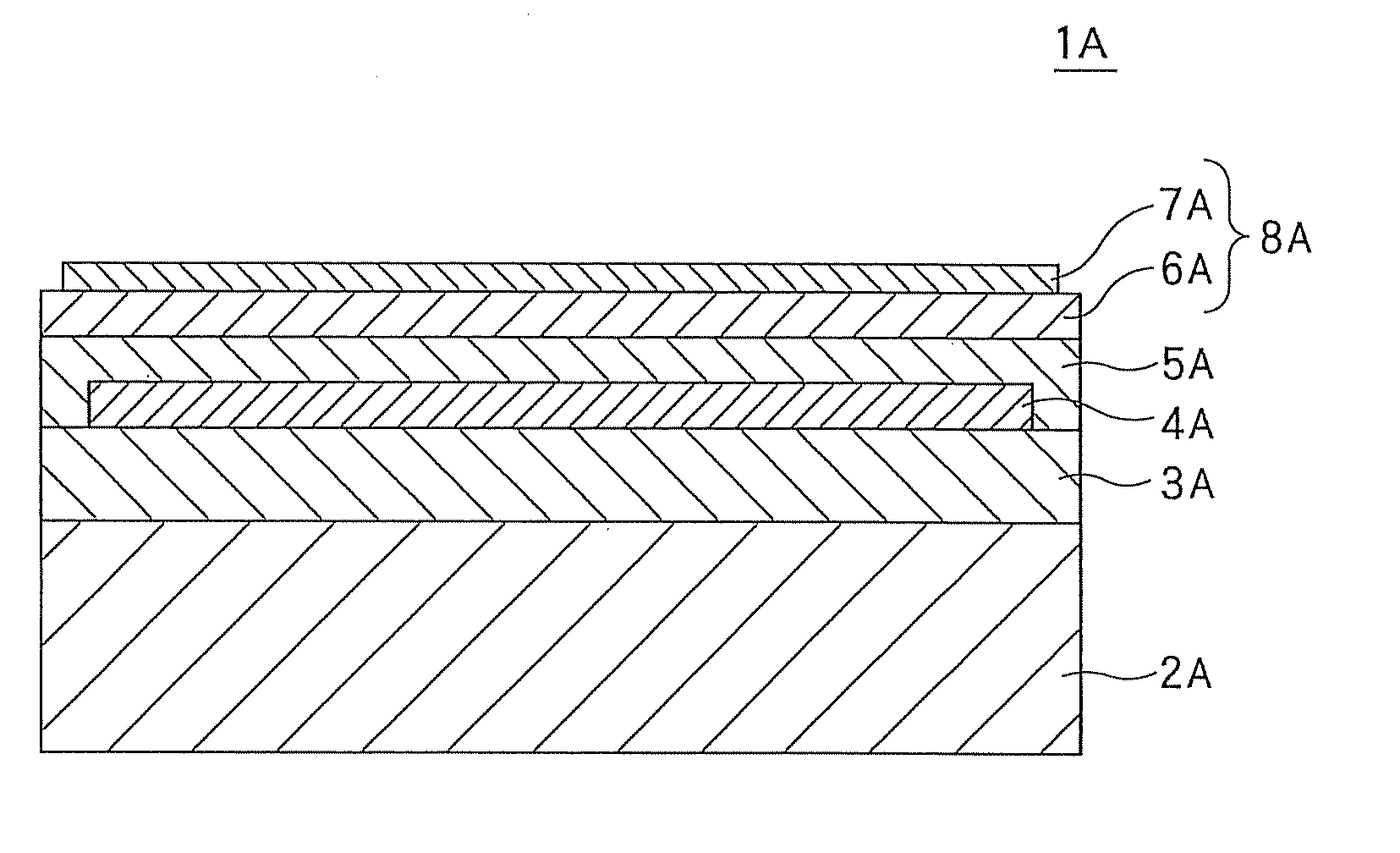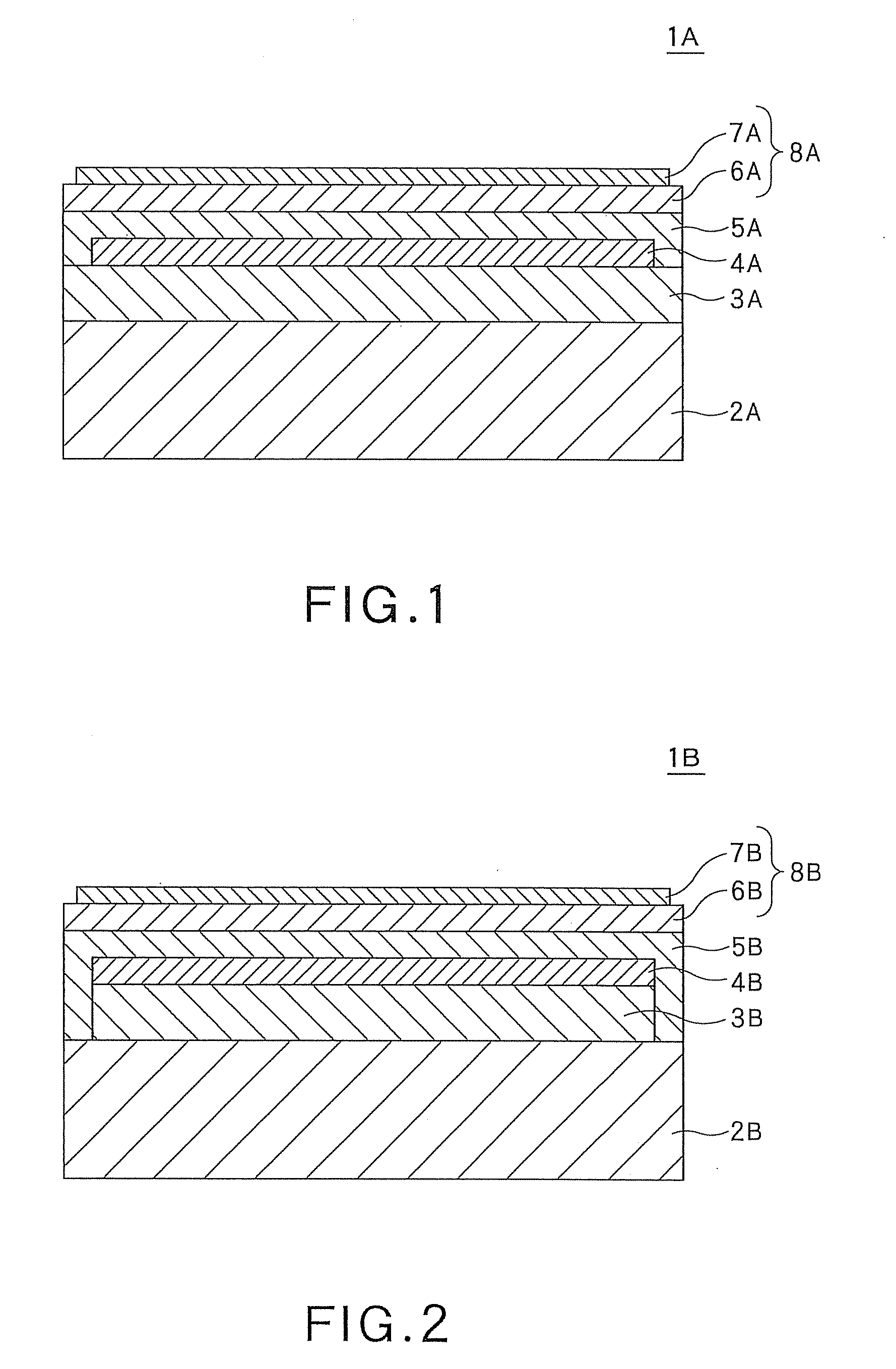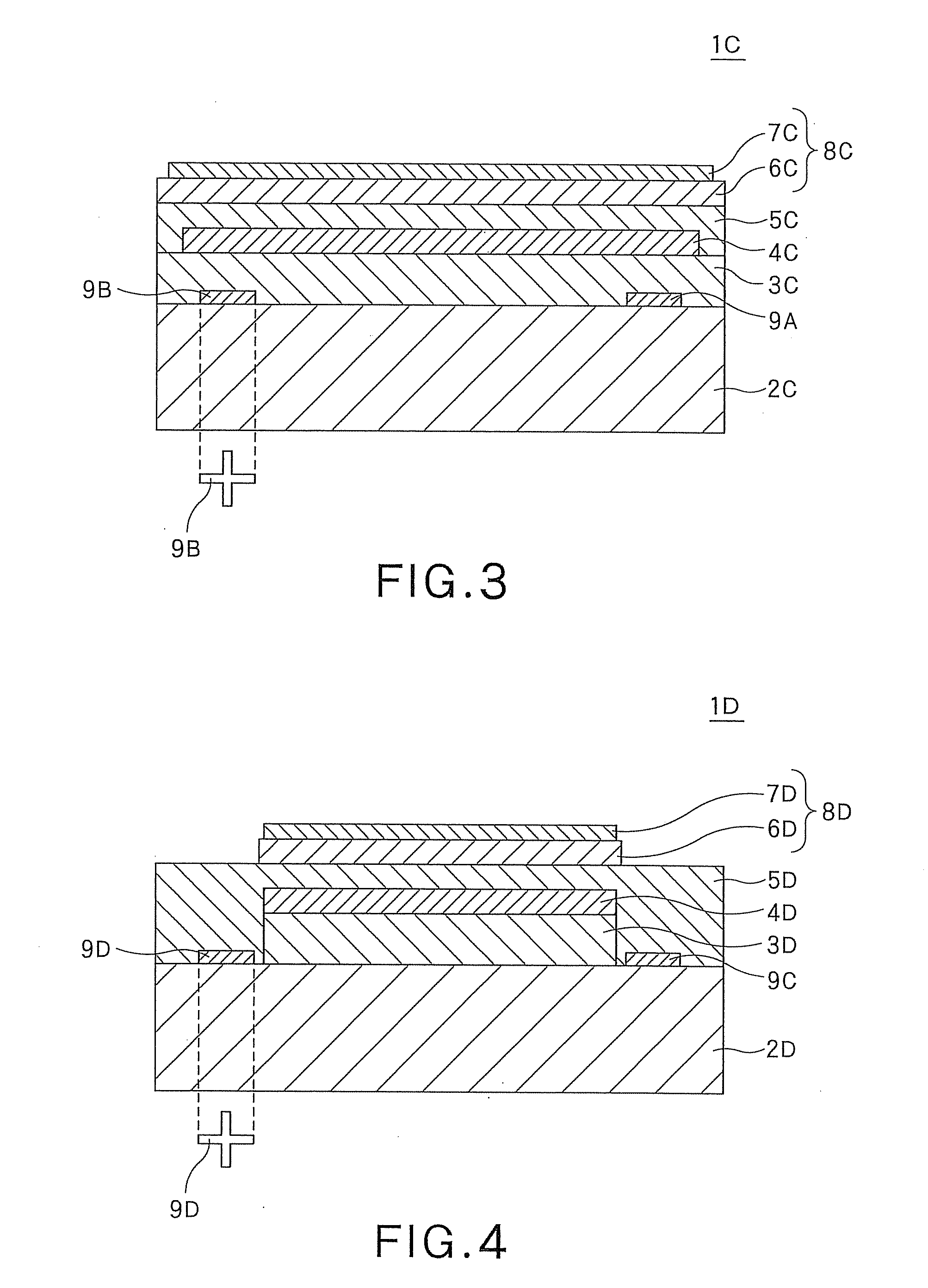Laminate, preparatory support, method for producing laminate, and method for producing device
a technology of laminate and support, which is applied in the direction of sustainable manufacturing/processing, final product manufacturing, transportation and packaging, etc., can solve the problems of chipping, difficulty in transporting the wafer, and difficulty in securing the uniformity
- Summary
- Abstract
- Description
- Claims
- Application Information
AI Technical Summary
Benefits of technology
Problems solved by technology
Method used
Image
Examples
experimental examples
[0163]The present invention will now be further described by reference to the following experimental examples, which illustrate the prevent invention but are not intended to limit its scope.
example 1
Production of Laminate
[0164]A 0.7 mm thick glass plate was used as a support. A photothermal conversion layer was formed on the support (photothermal conversion layer-forming step). More specifically, a resin precursor solution of a UV curable acrylic resin, containing a photopolymerization initiator and carbon blacks, was prepared, and the solution was applied onto the support by spin coating. Thereafter, the coating was irradiated with ultraviolet light to cure the resin, thereby forming a 1 μm thick photothermal conversion layer.
[0165]Next, a light blocking layer was formed on the photothermal conversion layer (light blocking layer-forming step). More specifically, aluminum was deposited onto the photothermal conversion layer by vacuum vapor deposition, thereby forming a 300 nm thick aluminum film as a light blocking layer. The light blocking layer was not formed on the entire surface of the photothermal conversion layer: the vacuum vapor deposition was carried out using a mask s...
example 2
[0174]A laminate and a device were produced in the same manner as in Example 1 except that focus position-indicating marks were provided in the photothermal conversion layer. More specifically, as shown in the laminate 1D of FIG. 4, a region where the photothermal conversion layer 3D is not formed was provided, and focus position-indicating marks 9C, 9D, each having a cross shape, were formed at five positions on the support by vacuum vapor deposition of aluminum using a mask (focus position-indicating mark-forming step). In the photothermal conversion layer detachment step, the photothermal conversion layer was irradiated with YAG laser light after focusing the laser light on the focus position-indicating marks by using a laser emitting device.
[0175]For the organic EL device thus obtained, the light-emitting properties were evaluated in the same manner as in Example 1. As a result, the entire 1 mm×1 mm light-emitting area was found to be luminous. No damaged area was observed even ...
PUM
| Property | Measurement | Unit |
|---|---|---|
| strain point | aaaaa | aaaaa |
| strain point | aaaaa | aaaaa |
| thickness | aaaaa | aaaaa |
Abstract
Description
Claims
Application Information
 Login to View More
Login to View More - R&D
- Intellectual Property
- Life Sciences
- Materials
- Tech Scout
- Unparalleled Data Quality
- Higher Quality Content
- 60% Fewer Hallucinations
Browse by: Latest US Patents, China's latest patents, Technical Efficacy Thesaurus, Application Domain, Technology Topic, Popular Technical Reports.
© 2025 PatSnap. All rights reserved.Legal|Privacy policy|Modern Slavery Act Transparency Statement|Sitemap|About US| Contact US: help@patsnap.com



